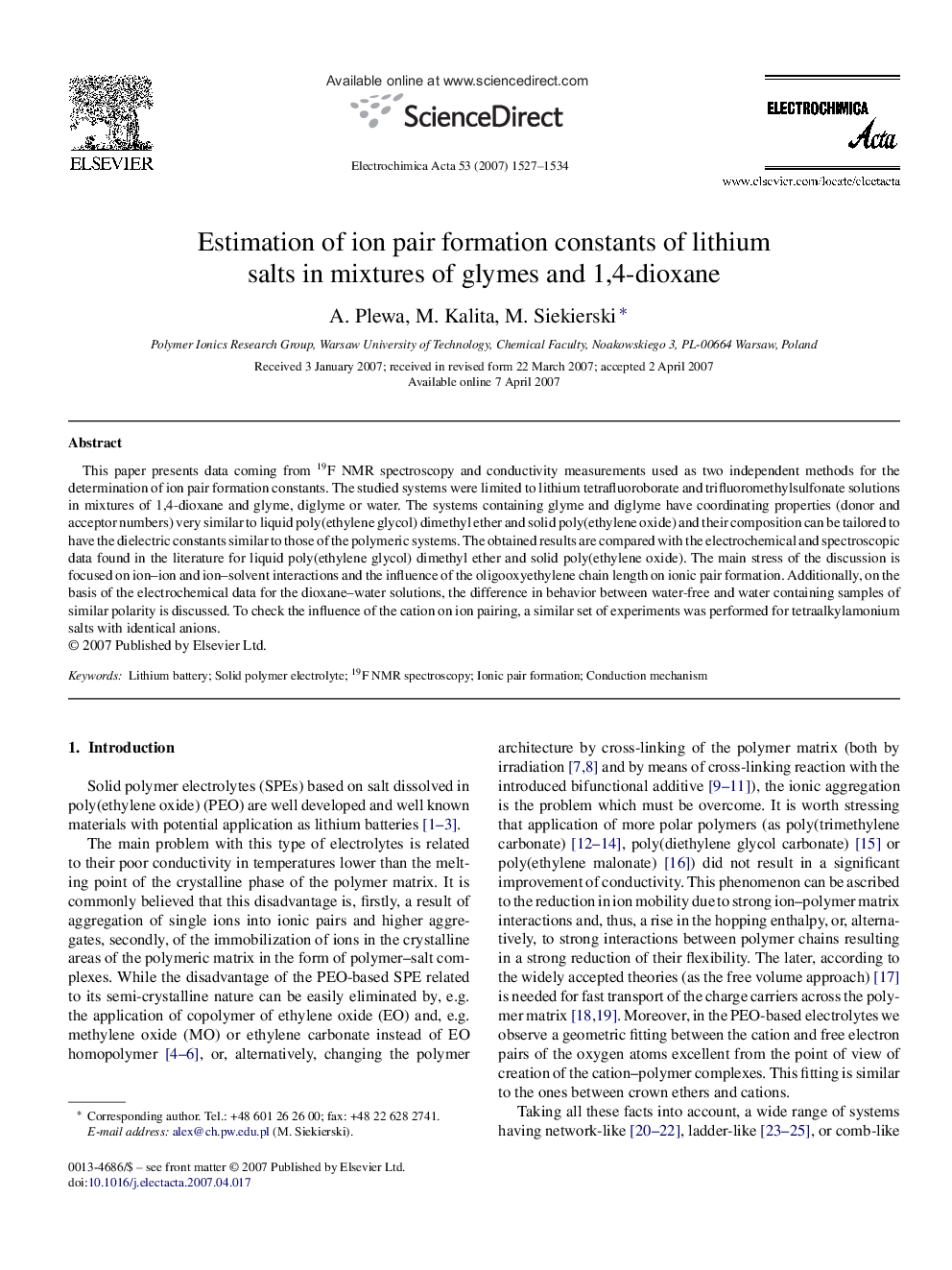| Article ID | Journal | Published Year | Pages | File Type |
|---|---|---|---|---|
| 193681 | Electrochimica Acta | 2007 | 8 Pages |
This paper presents data coming from 19F NMR spectroscopy and conductivity measurements used as two independent methods for the determination of ion pair formation constants. The studied systems were limited to lithium tetrafluoroborate and trifluoromethylsulfonate solutions in mixtures of 1,4-dioxane and glyme, diglyme or water. The systems containing glyme and diglyme have coordinating properties (donor and acceptor numbers) very similar to liquid poly(ethylene glycol) dimethyl ether and solid poly(ethylene oxide) and their composition can be tailored to have the dielectric constants similar to those of the polymeric systems. The obtained results are compared with the electrochemical and spectroscopic data found in the literature for liquid poly(ethylene glycol) dimethyl ether and solid poly(ethylene oxide). The main stress of the discussion is focused on ion–ion and ion–solvent interactions and the influence of the oligooxyethylene chain length on ionic pair formation. Additionally, on the basis of the electrochemical data for the dioxane–water solutions, the difference in behavior between water-free and water containing samples of similar polarity is discussed. To check the influence of the cation on ion pairing, a similar set of experiments was performed for tetraalkylamonium salts with identical anions.
